Do Americans Really Want Diversity?
Gregory Hood, American Renaissance, May 17, 2019

“Americans See Advantages and Challenges in Country’s Growing Racial and Ethnic Diversity” is the newest Pew Research Center report on race. “Americans have a complicated, even contradictory, set of views about the impact of diversity,” says the report, but the truth is simpler: Most Americans say one thing but do another.
Large majorities of every race — even whites — say “racial and ethnic diversity is very good for the country.”
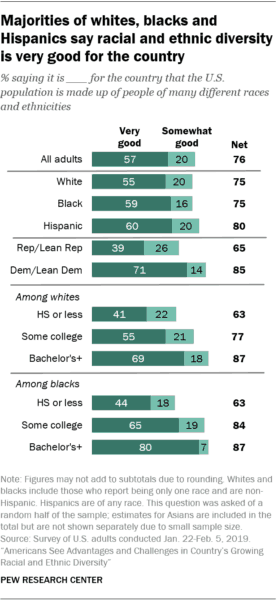
They also say racial and ethnic diversity has a “positive impact” on the culture.
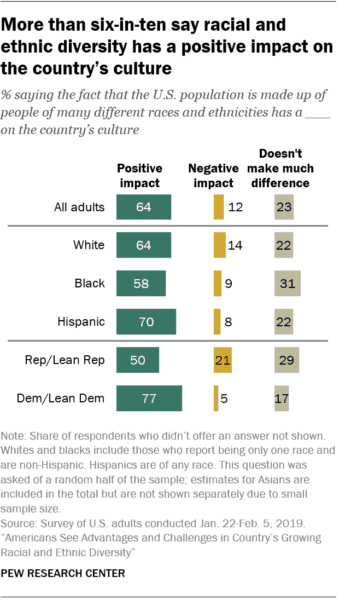
Majorities or pluralities think it’s important to promote workplace diversity.
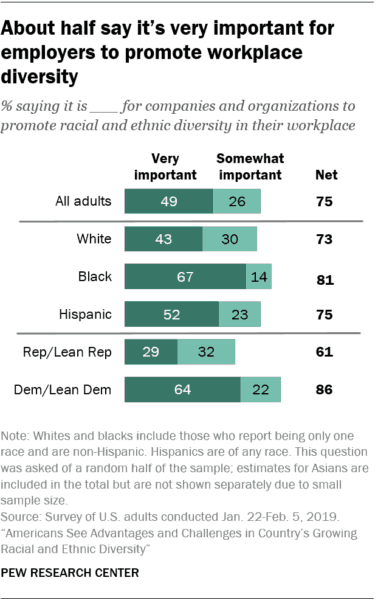
But almost 75 percent of respondents (including 78 percent of whites and 90 percent of Republicans) think employers should consider only a person’s qualifications, even if it means less diversity. Even 62 percent of Democrats agree.
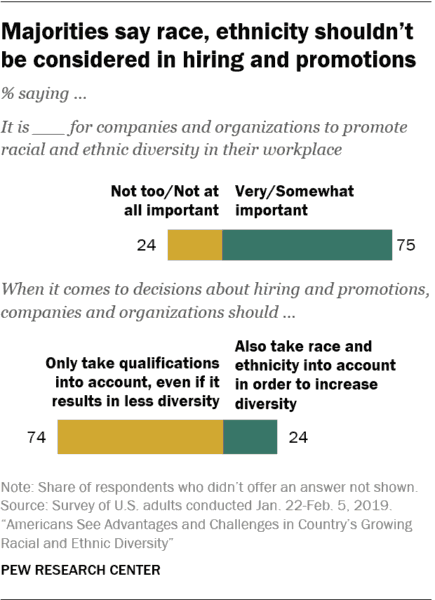
Most Americans also think students should attend local schools, even if it means most schools are not diverse. Sixty-two percent of whites agree, and Hispanics and Asians are about equally divided. Blacks are the only group willing to send children out of the neighborhood for “diversity” — presumably for teachers and classmates who are not black.
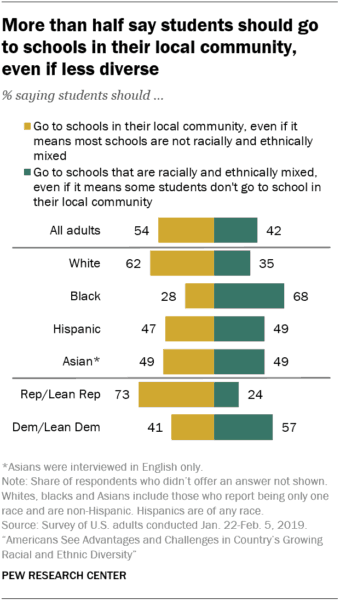
About two-thirds of Americans are satisfied with the level of diversity in their community. In the least diverse neighborhoods (meaning more than 90 percent white) about 70 percent are satisfied with the level of diversity. (Five percent want it even less diverse).
However, about three-in-four whites in the most diverse neighborhoods (where there is no majority of any group and whites are a minority) are also satisfied with the level of diversity, and about 70 percent of whites in communities with other levels of diversity are satisfied.
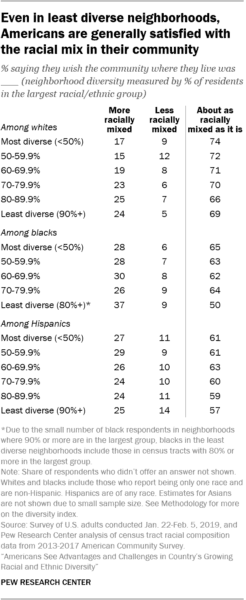
At any level of diversity, Hispanics are slightly more likely than whites to want more racial mixing, but majorities at every level are satisfied — with one exception.
Blacks are generally more favorable to racial mixing, though most are satisfied with the demographic status quo. However, 37 percent of blacks who live in the least diverse neighborhoods want more integration, and just 50 percent are satisfied. “Least diverse” neighborhoods for blacks are at least 80 percent black. Backs understand heavily-black neighborhoods are not desirable.
Most Americans don’t have a lot of daily interaction with people other races. Only a quarter of whites say they have a lot of contact with blacks and Hispanics, and even fewer with Asians. All groups except Asians say they have more contact with people of their own race than with other races.
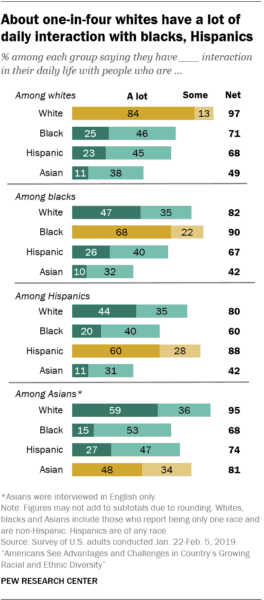
Americans are endlessly lectured that “diversity is our strength,” but few believe it.
Just seven percent (9 percent of Democrats and 3 percent of Republicans) think diversity makes it easier for policymakers to solve problems. A plurality of Americans — and most whites — say it makes it harder. Most blacks think it doesn’t make much difference and Hispanics are split.
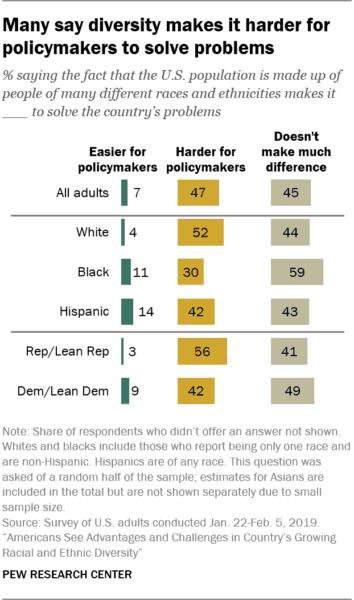
There are political possibilities here. Racially conscious whites can be influential if they are organized, but they are a small minority. Nevertheless, most whites, and even most non-whites, believe competence is more important than diversity. Republicans should attack racial preferences, especially since Democrats are pushing ever more radical, race-driven, anti-white policies. Most mainstream conservatives and even some liberals would probably support an attack on affirmative action.
Official English could also be popular. Almost half of white Republicans say it bothers them to hear a foreign language in public, and more than a third of all whites agree. (Not surprisingly, Hispanics are the least likely to be offended.)
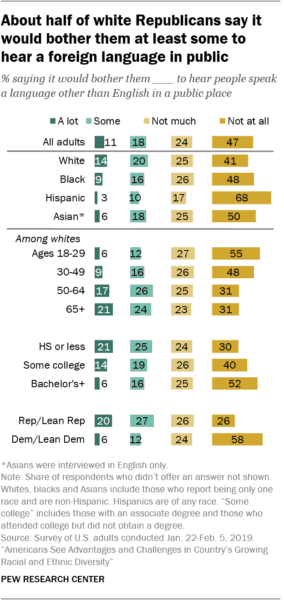
A 2018 Rasmussen poll reported that over 80 percent of Americans would support making English the official language of the United States, with just 12 percent opposed. Almost all Republicans (95 percent) support it. This would be a powerful political weapon for President Trump.
There are reasons for pessimism in this report. Younger whites are most likely to claim they want to live with more diversity. In mostly white neighborhoods, more educated whites are more likely to want more diversity. Younger whites are less bothered when they hear a foreign language. Though some may hope Generation Z is “based,” younger whites are usually more racially liberal than older whites. The high level of satisfaction reported by whites who are minorities in their neighborhoods suggests there actually are white “true believers” — but how many such whites are there? There is evidence whites are splitting into separate, hostile tribes, and party affiliation is often a good indicator.
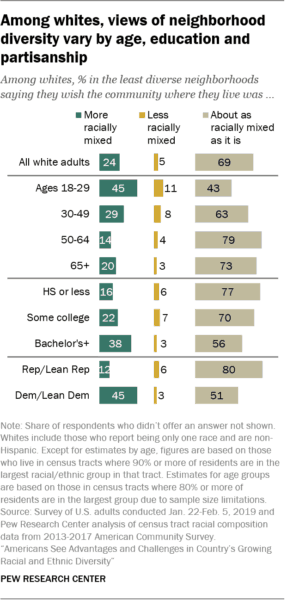
Still, most whites are implicitly on our side. Whatever they say about diversity, they want neighborhood schools, white neighborhoods, and merit-based hiring. Identitarians should push for these things. They have popular support and will fuel far-left fury, which will help rekindle white racial consciousness.
At the same time, we must organize and unapologetically speak in the name of those millions of racially conscious white Americans. Finding and recruiting whites who think a 90-percent white community isn’t enough would be a good place to start.
On balance, the new Pew report is encouraging. Americans say they want diversity, but many act like secret AmRen readers.















